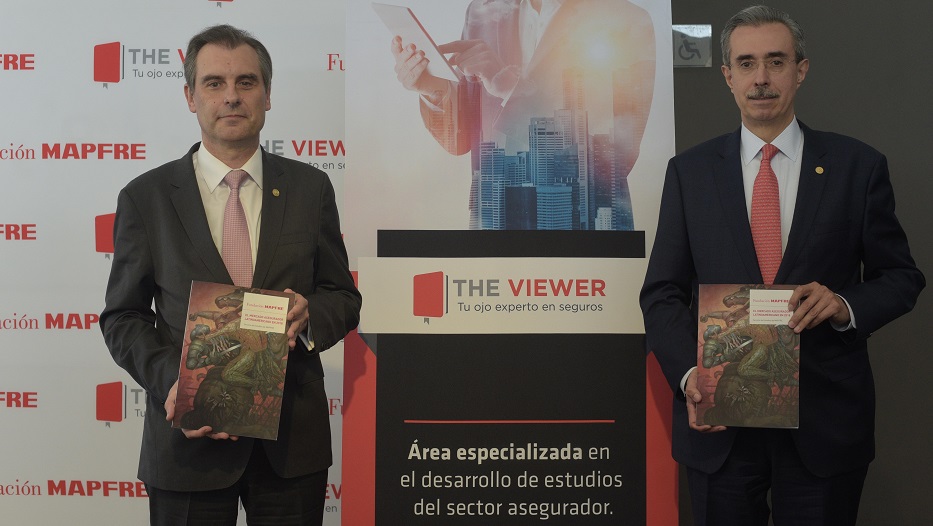admin | 04/10/2019
These data are from the report on The Latin American Insurance market in 2018, presented by MAPFRE Economic Research and edited by Fundación MAPFRE.
This decrease is taking place in both life and non-life insurances. It is primarily caused by the changes in exchange rates, the economic slowdown in certain countries—primarily Mexico and Brazil—and the impact of applying accommodative monetary policies.
As a whole, life insurance premiums fell 7.2%, compared to 9% growth in the previous year. Non-life premiums fell 4%, compared to 8.2% growth in 2017. In the first group, individual and group life insurance policies (85.6% of all life insurance policies) experienced a drop of 9.1%, caused in large part by the fall of this business line in Brazil. In terms of non-life, the automobile line, which represents 18.7% of all premiums, saw a contraction of 7.4%.
The depreciation of currencies, primarily the Argentinian peso and the Brazilian real, and its effects on business performance are so drastic that the majority of the region’s insurance markets have experienced real growth in premium volume in their respective currencies, with the exceptions of Guatemala, Argentina, Brazil, Uruguay, and Venezuela. In contrast, the performance of Peru and Chile should be noted. Each had notable growth in line with the positive progress of their economies. The Dominican Republic, Bolivia, Puerto Rico, Panama, and El Salvador also showed positive gains.
The consolidated net result of the region’s insurance market amounted to 12.06 billion dollars in 2018, representing growth of 35.8% percent over the previous year. Most markets showed growth in their profit measured in dollars. Regarding the profitability of shareholders’ equity (ROE), Argentina (28.6%), Dominican Republic (24.7%), and Nicaragua (24%) stand out.
Moreover, the insurance markets in Latin America that have the highest concentration levels in 2018 continue to be, as in the previous year, Costa Rica, Uruguay, Nicaragua, and Peru.
Structural trends
The report produced annually by MAPFRE Economic Research also aims to review the main structural trends underlying growth of operations, such as penetration (premiums with respect to GDP), density (premiums per capita, measured in dollars in this case), and insurance depth (the relationship between life insurance premiums with respect to total premiums). Although all these indices have shown positive performance in the past decade (2008–2018), they are still far from reaching the level of insurance considered economically necessary and beneficial to society.
The penetration rate was 2.9% in 2018, the same as in 2017. However there has been growth of 0.6 percentage points since 2008 due to the development of life insurance policies. Puerto Rico continues to be the country with the highest rate of penetration, 13.4% in 2018, due to the important role of insurance companies in its health system, followed by Chile (4.6%) and Brazil (3.1%). Regarding density, each inhabitant of the region spent an average of 246.6 dollars on insurance in 2018, which is a decrease of 6.4% compared to the previous year, due in large part to the depreciation of local currencies with respect to the dollar. Most of this expense was concentrated in the non-life segment (136.7 dollars). The depth index also showed a downward trend. It was 44.6% in 2018, 0.8 percentage points lower than in 2017. It was significantly impacted by the performance of the life segment in Brazil.
The report also analyzes the Insurance Protection Gap (IPG), which represents the difference between the insurance coverage that is economically necessary and beneficial to society and the amount of coverage that is actually acquired. The estimated IPG for the Latin American insurance market was 254.3 billion dollars in 2018, 1.9% lower than in the previous year. In addition, establishing the IPG allows us to measure the potential insurance market in the region and the size that the market could reach if this gap were to disappear. Accordingly, the potential insurance market in Latin American in 2018 (the sum of the actual insurance market and the IPG) stood at 404.9 billion dollars. This means that the potential market is 2.7 times larger than the region’s current market (150.6 billion dollars).





